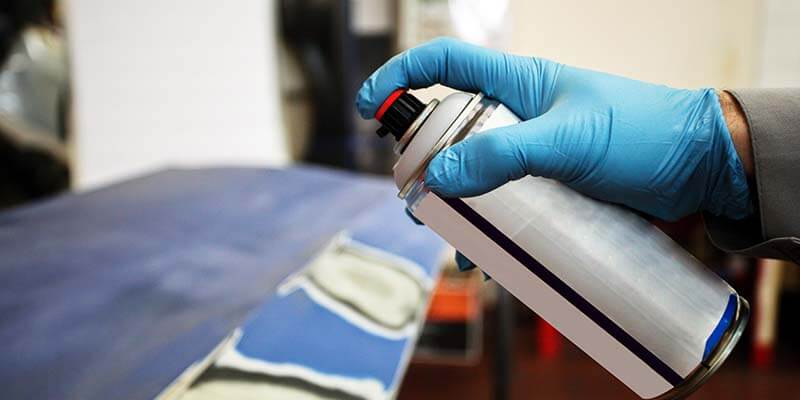
Spray paint offers a convenient and versatile way to add color and finish to various surfaces. However, its unique composition presents potential hazards if not handled responsibly. Understanding the flammability of spray paint and implementing proper safety measures is crucial for preventing accidents and ensuring a safe working environment. This article will delve into the key aspects of spray paint safety, covering everything from storage and ventilation to personal protective equipment (PPE) and manufacturer instructions.
This comprehensive guide will equip you with the knowledge and practices necessary to handle spray paint safely and effectively. We’ll explore the reasons behind its flammability, outline best practices for ventilation and storage, emphasize the importance of PPE, and highlight the significance of adhering to manufacturer guidelines. By following these recommendations, you can minimize risks and enjoy a safe and successful painting experience.
Spray Paint Flammability
Spray paint is inherently flammable due to its high concentration of volatile organic compounds (VOCs). These VOCs are easily evaporated at room temperature, forming flammable vapors that can ignite when exposed to heat, sparks, or open flames. The presence of propellants, often liquefied gases like butane or propane, further contributes to the flammability of spray paint.
The flash point of a substance refers to the lowest temperature at which it can produce enough vapor to ignite. Spray paints typically have low flash points, meaning they can ignite easily even at relatively low temperatures. It’s essential to remember that is spray paint flammable? The answer is unequivocally yes. Therefore, treating spray paint with caution and adhering to strict safety protocols is paramount.
The flammability of spray paint varies depending on its specific formulation and the type of VOCs used. Some paints may be more flammable than others, so it’s always best to consult the product label for detailed information about its flammability characteristics. Understanding these factors allows you to assess the level of risk associated with a particular spray paint and take appropriate precautions.
Ventilation and Storage Safety
Proper ventilation is crucial when handling spray paint to prevent the buildup of flammable vapors in enclosed spaces. Always work in a well-ventilated area, preferably outdoors or in a garage with open doors and windows. If working indoors, use exhaust fans to remove fumes effectively.
Adequate ventilation not only minimizes fire hazards but also protects your health by reducing exposure to harmful VOCs. When storing spray paint, choose a cool, dry location away from direct sunlight, heat sources, and ignition sources like electrical appliances or open flames. Store cans upright in a well-ventilated area to prevent leaks and spills.
Fire Safety Measures
In addition to proper ventilation and storage, implement fire safety measures to mitigate potential risks. Keep a fire extinguisher readily accessible in your workspace and ensure everyone knows how to use it. Avoid smoking or using open flames near spray paint. Install smoke detectors and carbon monoxide detectors in your home or workspace to provide early warning of fires or hazardous gas buildup.
Personal Protective Equipment (PPE)
Wearing appropriate personal protective equipment (PPE) is essential when handling spray paint to safeguard your health and well-being. This includes:
- Gloves: Wear nitrile or latex gloves to protect your skin from contact with spray paint and its solvents. Choose gloves that are specifically designed for chemical resistance.
- Eye Protection: Safety glasses or goggles provide a barrier against splashes and fumes, protecting your eyes from irritation and potential damage.
- Respirator: When working in poorly ventilated areas or handling paints with high VOC content, wear a respirator mask equipped with organic vapor cartridges to filter out harmful fumes.
Additional PPE Considerations
Depending on the specific task and paint type, you may need additional PPE such as:
- Long-sleeved Clothing: Wear long sleeves and pants made of tightly woven fabric to minimize skin exposure.
- Closed-toe Shoes: Protect your feet from spills and splashes by wearing closed-toe shoes.
Manufacturer Instructions
Always carefully read and follow the manufacturer’s instructions provided on the spray paint can. These instructions contain vital information about safe handling, storage, application techniques, and potential hazards associated with the specific product. Pay attention to warnings, precautions, and recommended safety measures outlined by the manufacturer.
Understanding Product Labels
Product labels provide essential details about the spray paint, including:
- Flammability Rating: Indicates the level of flammability based on flash point and VOC content.
- Safety Symbols: Alert you to potential hazards such as flammability, toxicity, or corrosiveness.
- First Aid Instructions: Provide guidance in case of accidental exposure or contact with skin or eyes.
Safe Handling Practices
When handling spray paint, always prioritize safety by following these best practices:
- Avoid Spills and Leaks: Handle cans carefully to prevent spills and leaks. Clean up any spills immediately using an absorbent material and dispose of it properly.
- Shake Well Before Use: Shake the can thoroughly before each use to ensure proper mixing of the paint and propellant.
- Maintain a Safe Distance: Hold the can at least 10-12 inches away from the surface when spraying to avoid overspray and potential damage.
- Use Even Strokes: Apply even, overlapping strokes to achieve a consistent finish. Avoid holding the can in one place for too long to prevent paint buildup.
Post-Use Precautions
After using spray paint:
- Dispose of Cans Properly: Empty cans should be disposed of according to local regulations. Never puncture or incinerate them.
- Clean Equipment Thoroughly: Clean all equipment used with spray paint, including nozzles and air hoses, with appropriate solvents as recommended by the manufacturer.
Conclusion
Spray paint offers a convenient and versatile solution for various painting projects. However, its flammability necessitates careful handling and adherence to safety protocols. By understanding the risks associated with is spray paint flammable, implementing proper ventilation and storage practices, utilizing personal protective equipment (PPE), following manufacturer instructions, and adopting safe handling techniques, you can minimize hazards and enjoy a successful and safe painting experience. Remember, prioritizing safety is paramount when working with any potentially hazardous materials.
